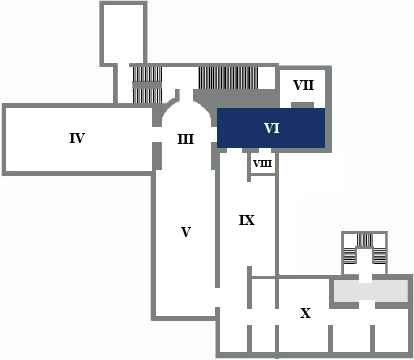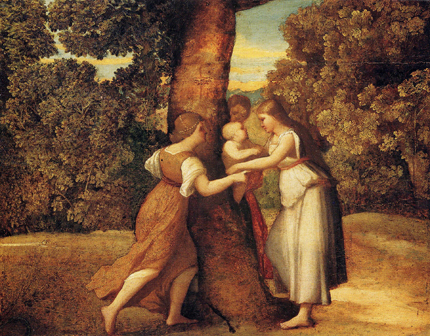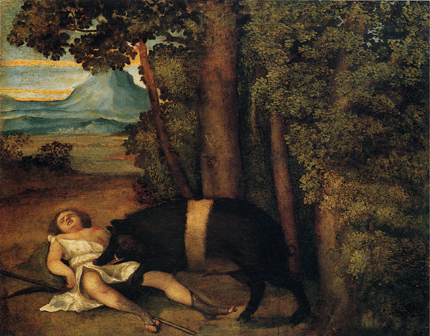|
Giovan Pietro Rizzoli, detto Giampietrino
Madonna with Child
end of 15th century
This intense Renaissance Madonna has been attributed to Giampietrino, Leonardo's pupil working in the great master's workshop at the end of the 15th century.
In this painting all religious references are subordinated to profane ones. The beautiful, elegantly-dressed and bejewelled lady is posed and holds the Son in her lap, while the young St. John turns his face upwards to the Child. It is however a simple apple, placed on the sideboard in the background, which gives the work its real meaning. The apple, maggoty and rotten, is the symbol of the decadence intrinsic in every living thing, warning us at the same time of the transitory nature of the young mother's beauty and wealth.
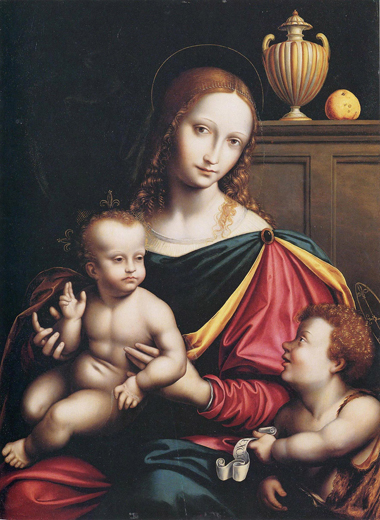
|
|
Sebastiano del Piombo
Birth of Adonis
Death of Adonis
c. 1510
The two works were probably made as parts of a painted chest. Painted by Sebastiano del Piombo around 1510, they show the clear influence of Giorgione, the great Venetian master of the first decades of the 16th century.
The two panels portray two episodes from the myth of Adonis, as described in Ovid's Metamorphosis. The first painting tells of the Birth of Adonis just at the moment when the lovely baby is literally pulled out of the myrrh tree by a very special midwife, Aphrodite.
The second instead tells of the Death of Adonis killed by a wild boar during a hunting party. The blood shed by the dying Adonis will give roses, until now only white, their red hue, and from each tear shed by Aphrodite anemones will sprout. This is a story of birth and death of the unfolding of seasons.
|
|
Tintoretto
Lamentation over the body of Christ
1555-1556
The Lamentation over the body of Christ was painted by Tintoretto between 1555 and 1556, a period of great interest in the work of Paolo Veronese.
The group of mourners at the foot of the cross encircles the heroic body of Christ, which is counterbalanced by that of the swooning Virgin, with the rhythm of a syncopated dance and a pained, decidedly theatrical movement.
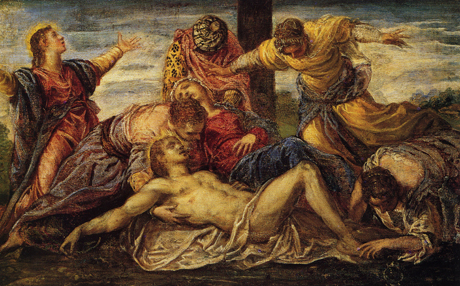
|
